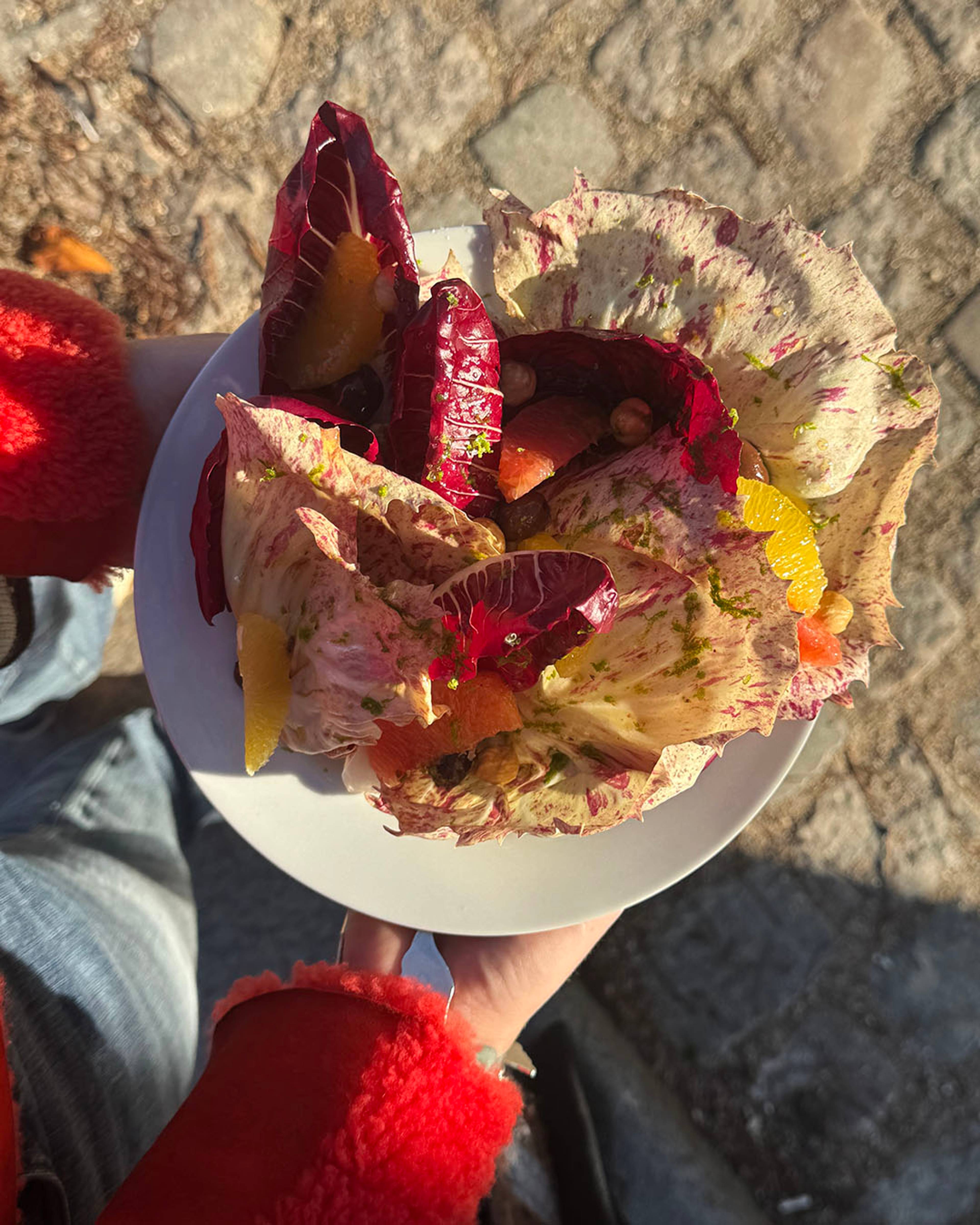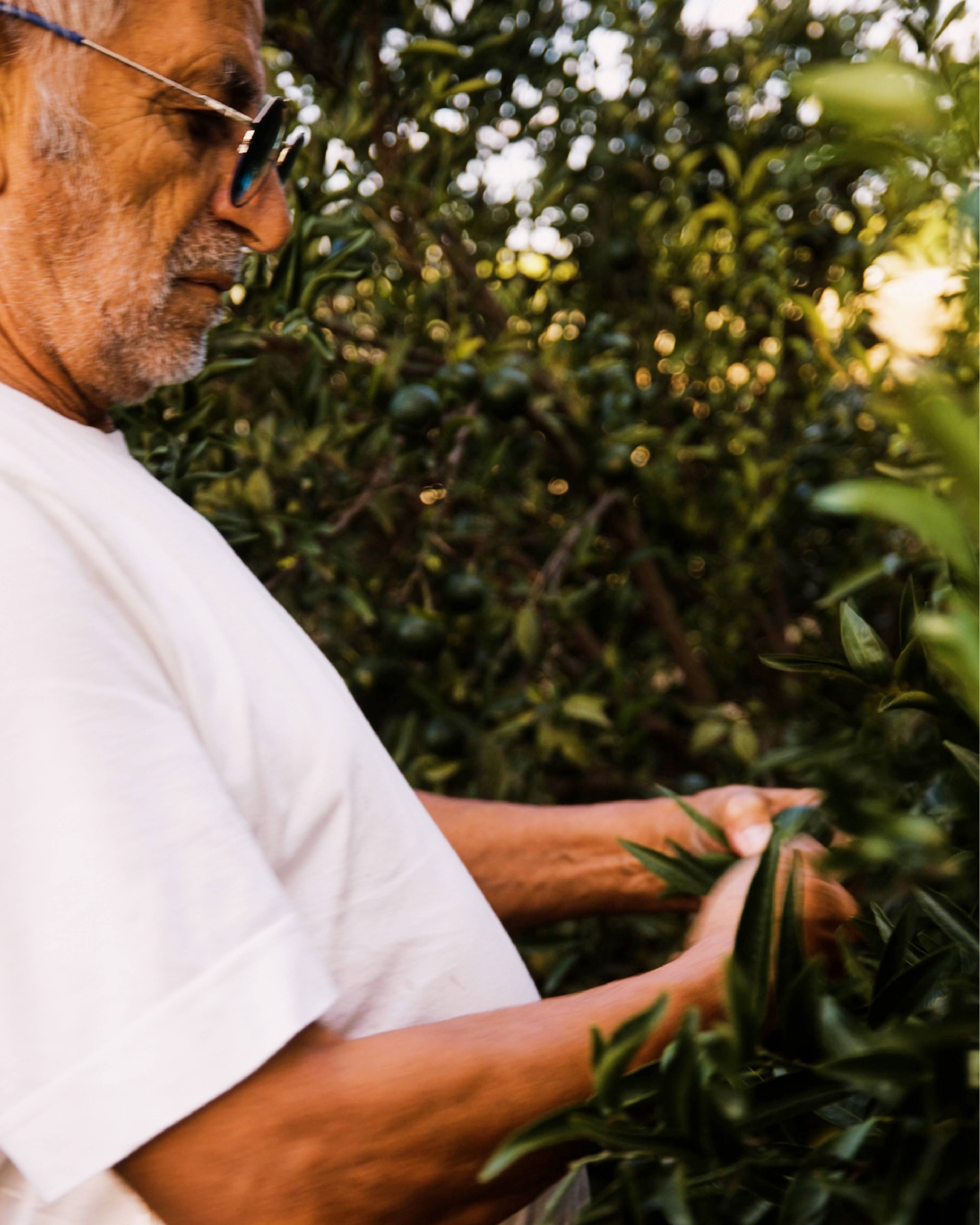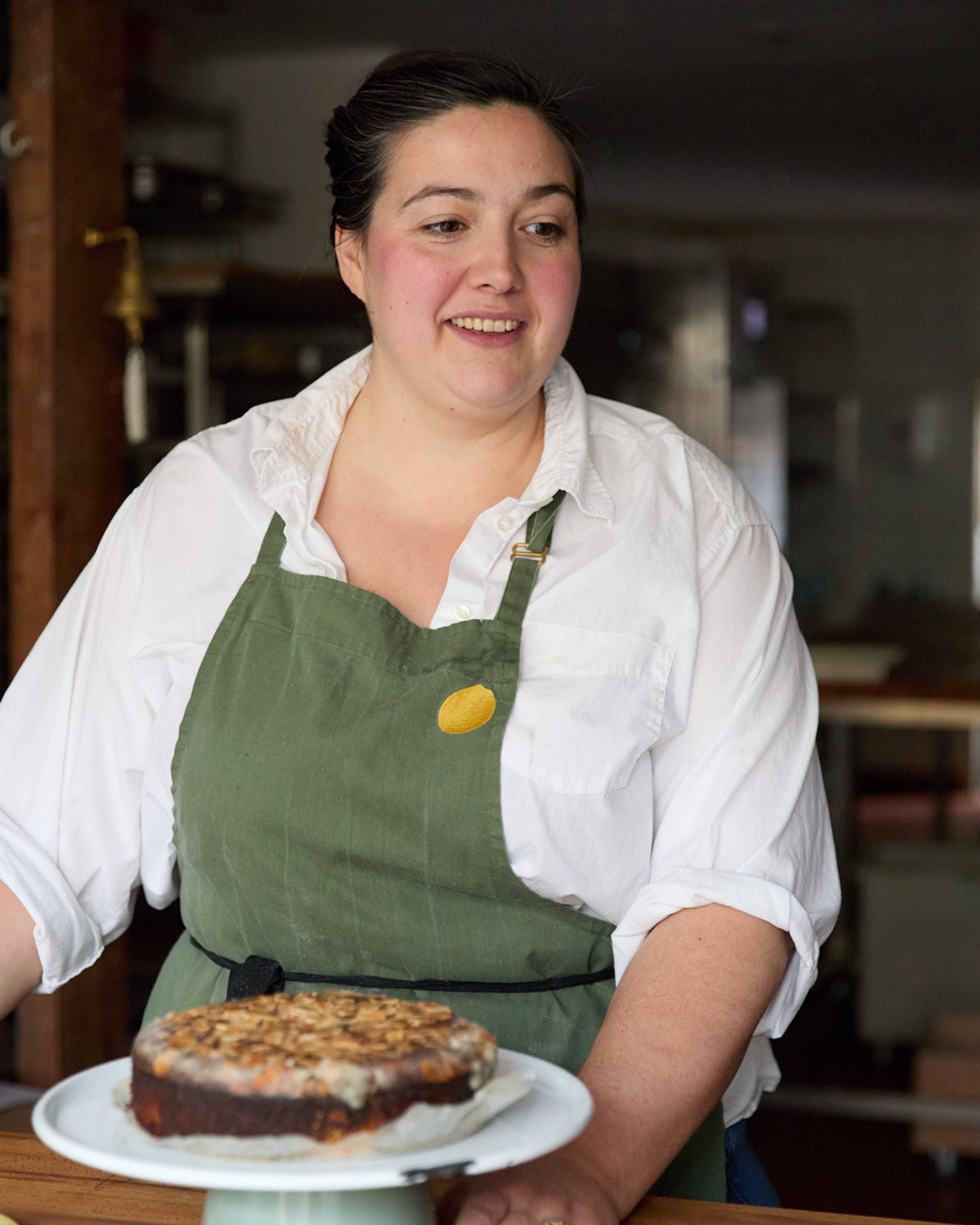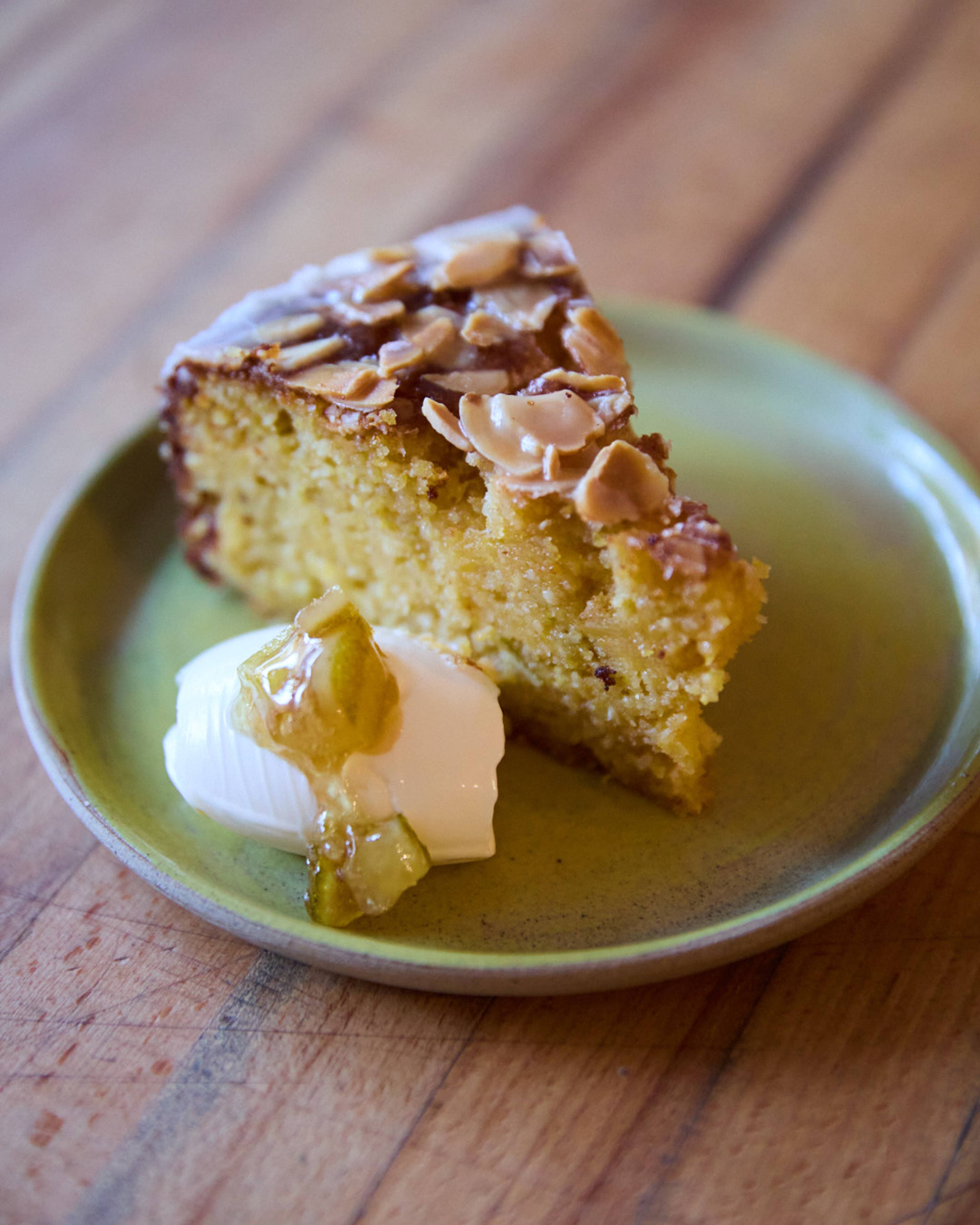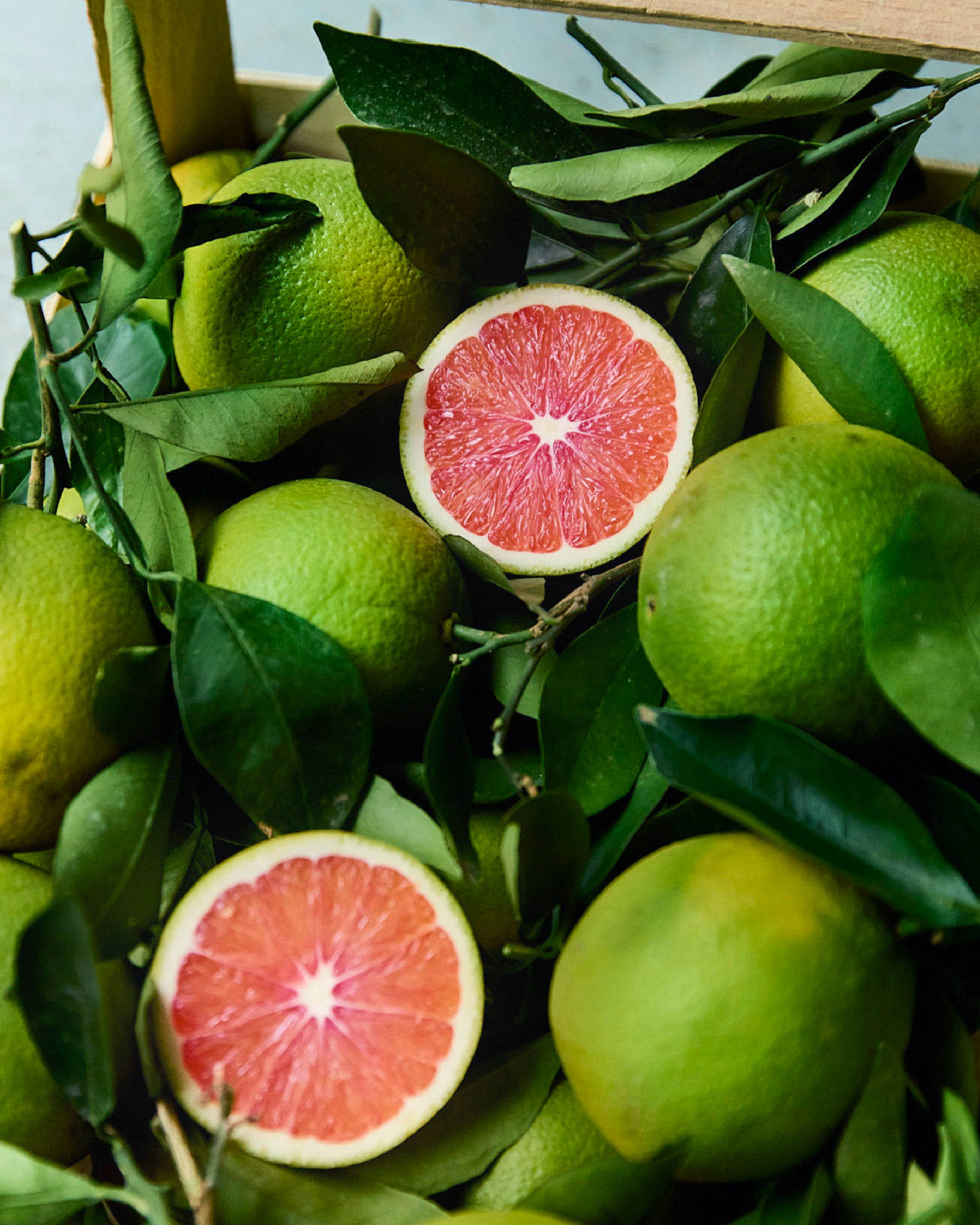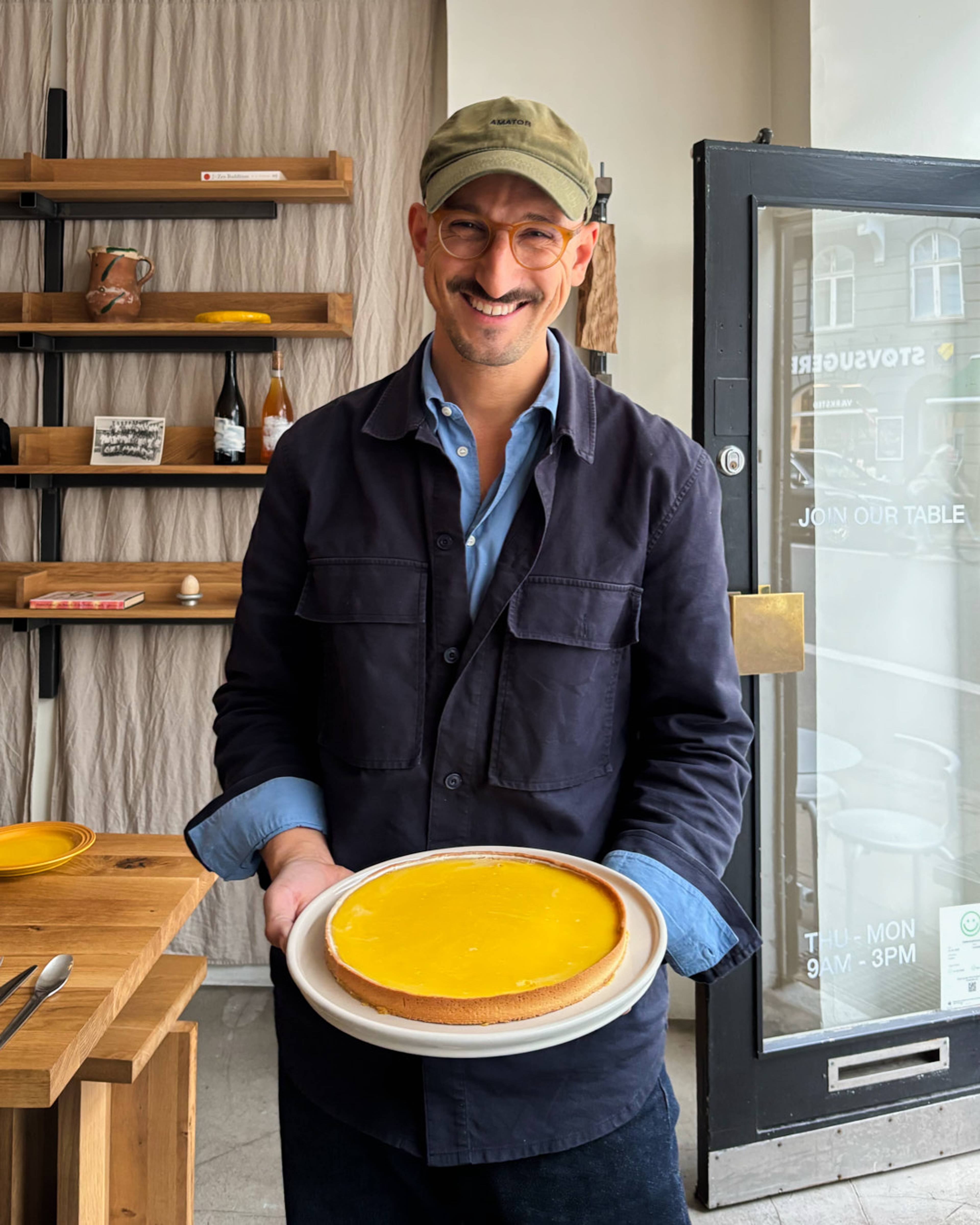AT THE TABLE WITH DR JOHNNY DRAIN
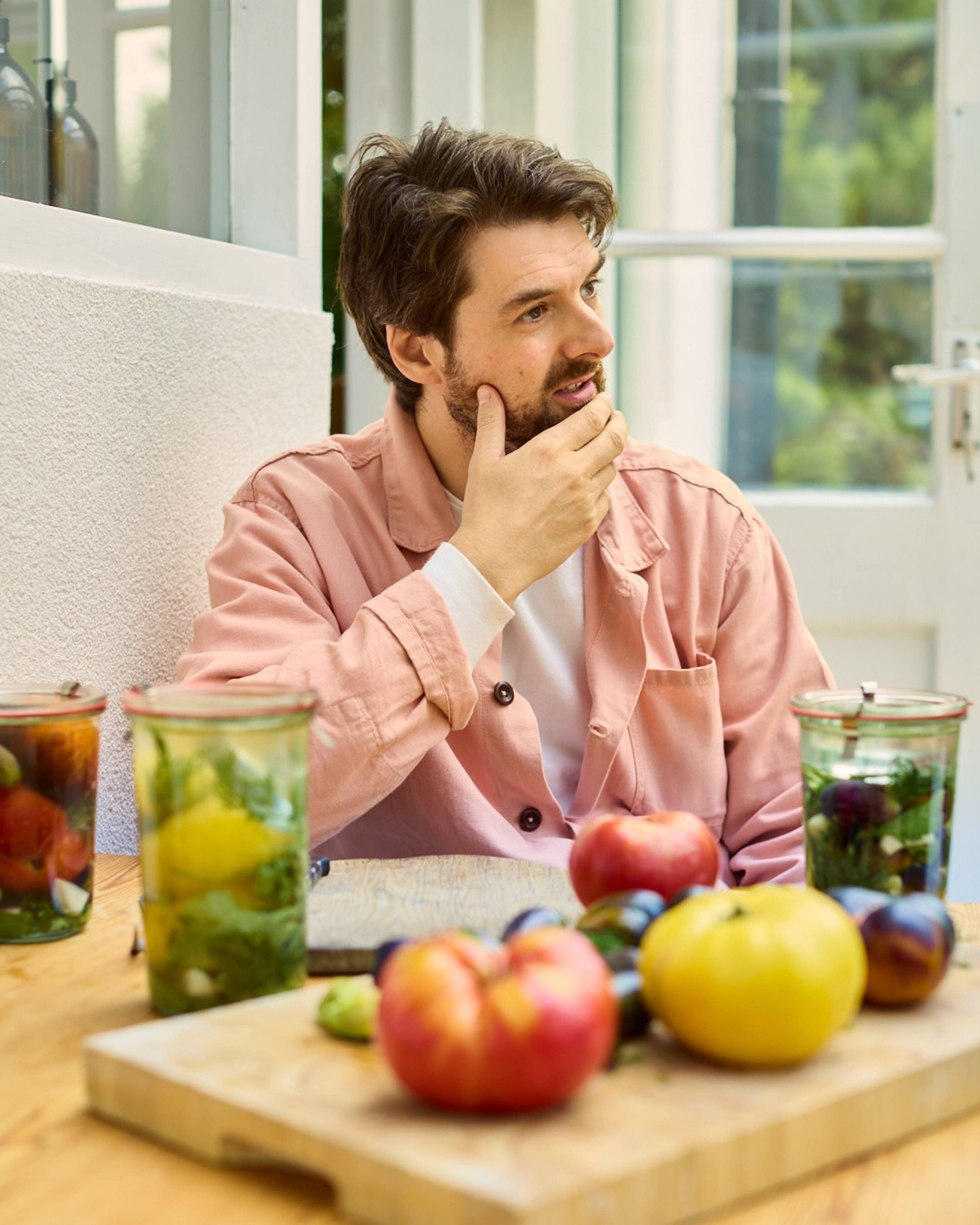
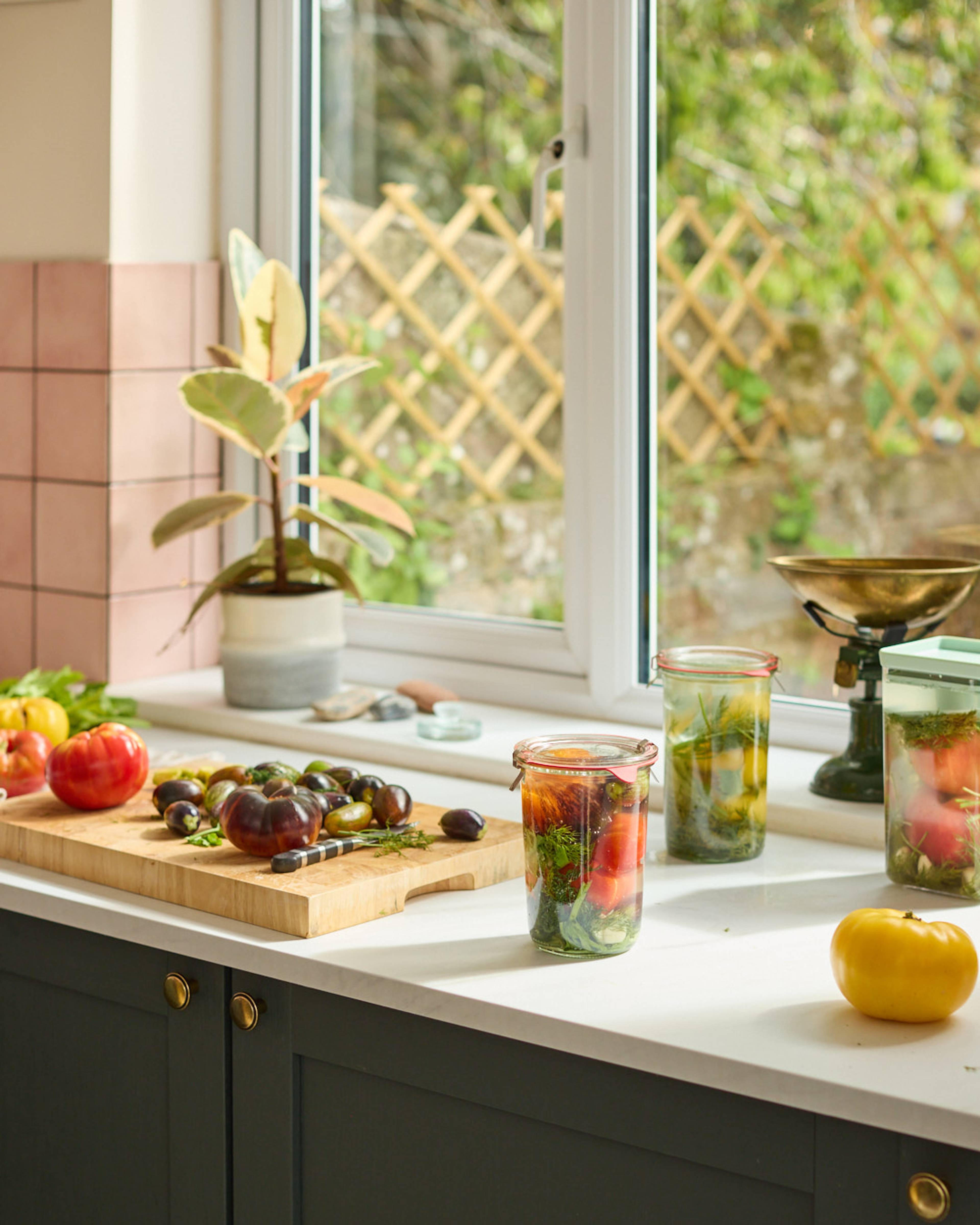
“Fermentation keeps you humble,” Dr Johnny Drain tells us when we meet. “I’ve had jars of fermented fruit that build up so much pressure they explode like champagne bottles. Once, I opened a jar and it painted the ceiling red. It’s messy, but also kind of wonderful – that sense of food being alive.”
Humility, it seems, is a defining trait of Dr Drain’s. Though his career reads anything but ordinary.
With a PhD in Materials Science from Oxford and years of experience advising the world’s most pioneering kitchens on how to push flavour forward, from Noma’s Nordic Food Lab to Mirazur, Dandelyan and Silo, he’s built a reputation as the chef-scientist making fermentation not just cool, but genuinely exciting.
His work sits at the intersection of ancient practice and modern innovation, where microbes become both collaborators and muses.
In 2021, he co-founded Win-Win (WNWN Food Labs), the first company to launch cocoa-free chocolate to market, a bold move tackling both sustainability and flavour. Most recently, he’s distilled years of bubbling jars and experiments into his new book, Adventures in Fermentation, which dives deep into the possibilities hidden in the microbial world.
Describing the book, René Redzepi, Danish chef and co-owner of the three-Michelin starred Noma, writes “Johnny Drain is a kind of microbial poet… With the mind of a scientist and the soul of a chef, Johnny takes fermentation beyond the obvious.”
Fermentation is what brings us here today. With just a few weeks left of the British Heirloom Tomato season, we ask Dr Drain to show us how to capture their flavour and extend their life, so we can enjoy them for days to come.
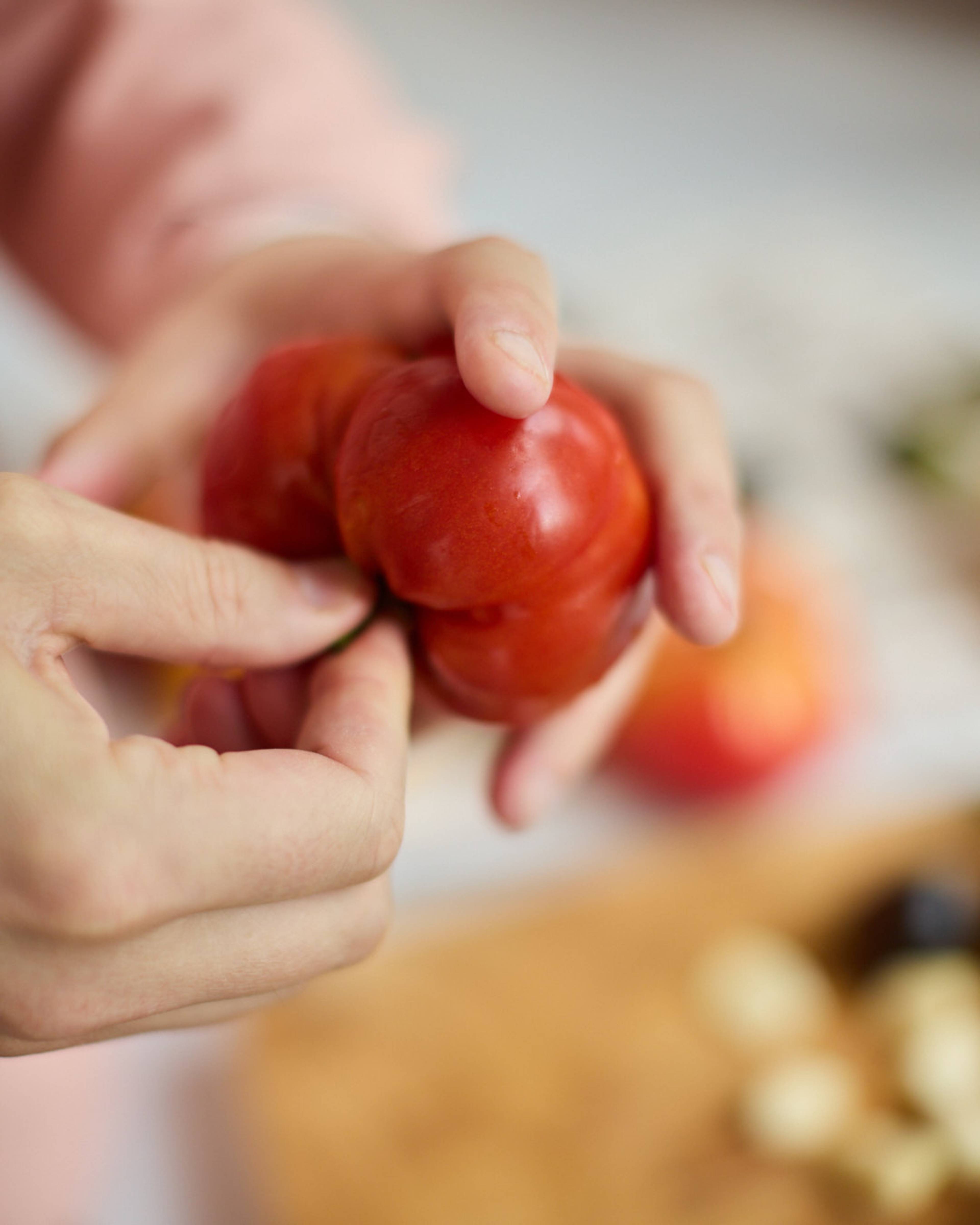
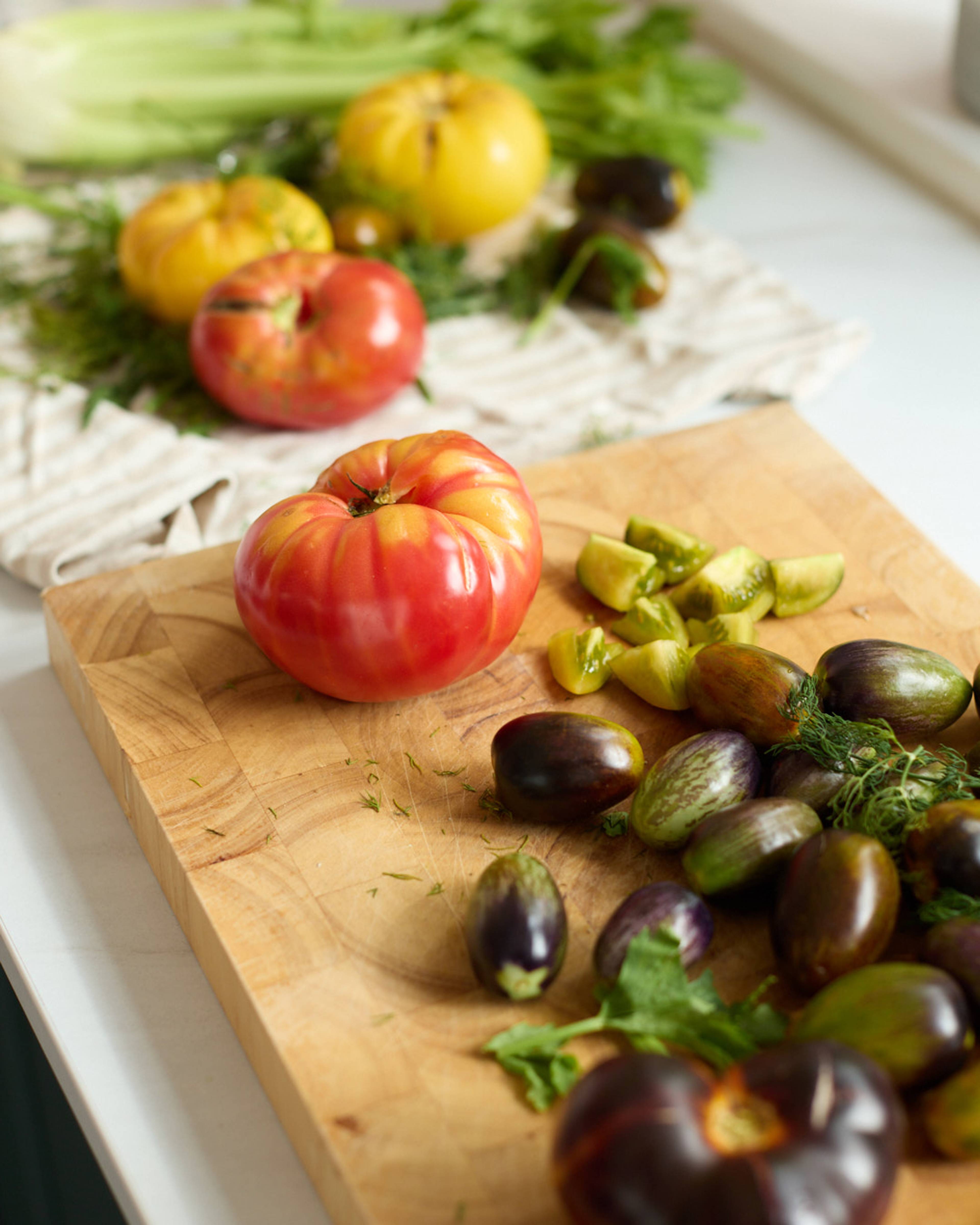
Simply put, fermentation is cooking with microbes, we’re told.
Instead of fire or an oven, you’re harnessing bacteria, moulds, and yeasts to do the work. They change the flavour, aroma, colour, even texture of what you’re working with. “It sounds niche, but it’s not,” says Dr Drain. “Some of the world’s most beloved foods – bread, cheese, chocolate, coffee, wine – are all products of fermentation.”
He credits flavour as his motivation for exploring what he calls the weird and wonderful world of microbes.
In Adventures of Fermentation, he writes:
“I'm predominantly interested in teasing out flavour from unexpected places. Want to make legumes taste like chocolate? Fermentation. Want to make cereals taste like tropical fruits? Fermentation.
If you're an enthusiastic home-cook wanting exciting, punchy flavours with which to wow your guests, if you're a busy parent seeking quick, nutritious dinners for kids and partners, or if you're a fellow gastronaut interested in how we can produce tasty food sustainably, then you should be adding fermentation to your arsenal of culinary tools and hacks.”
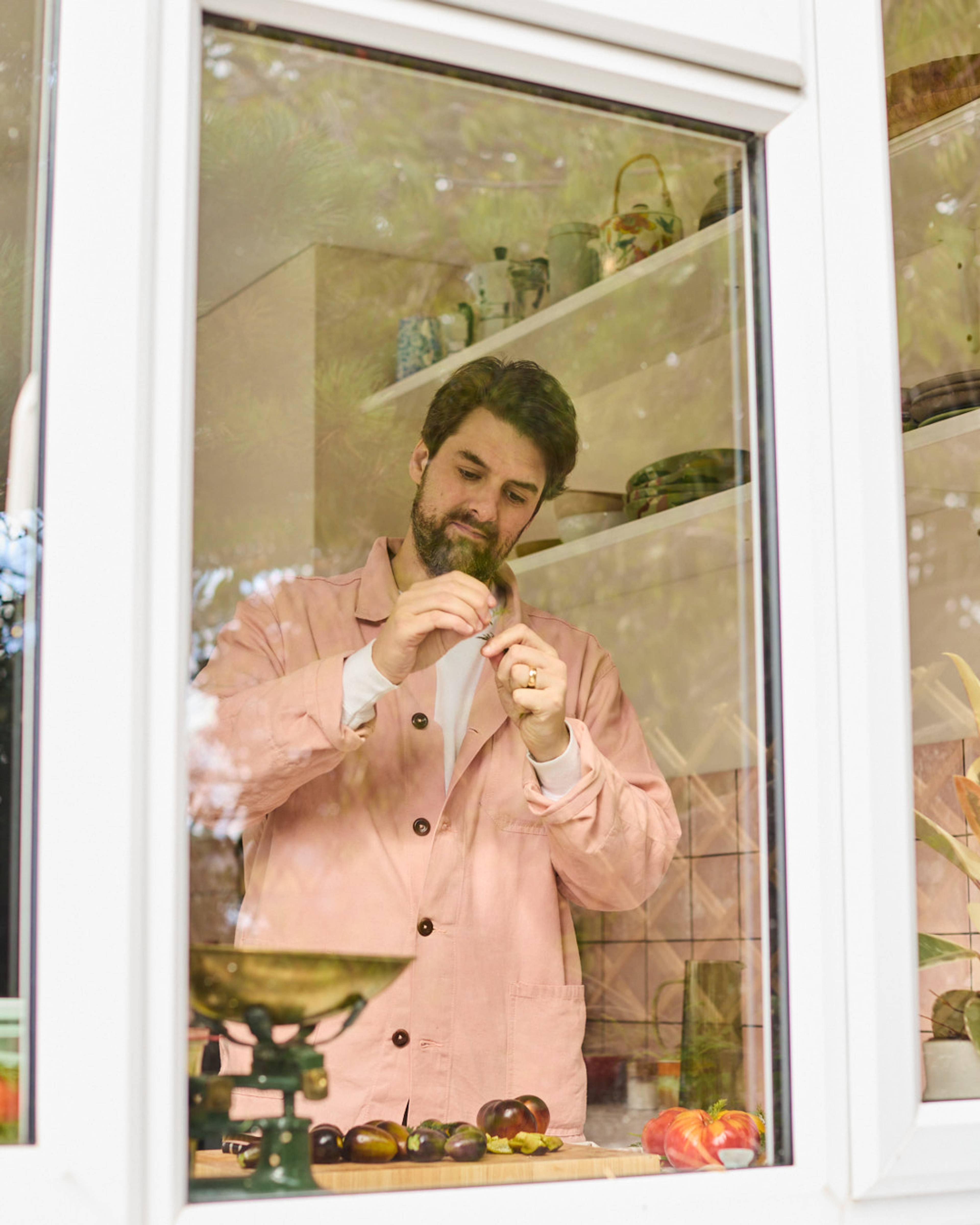
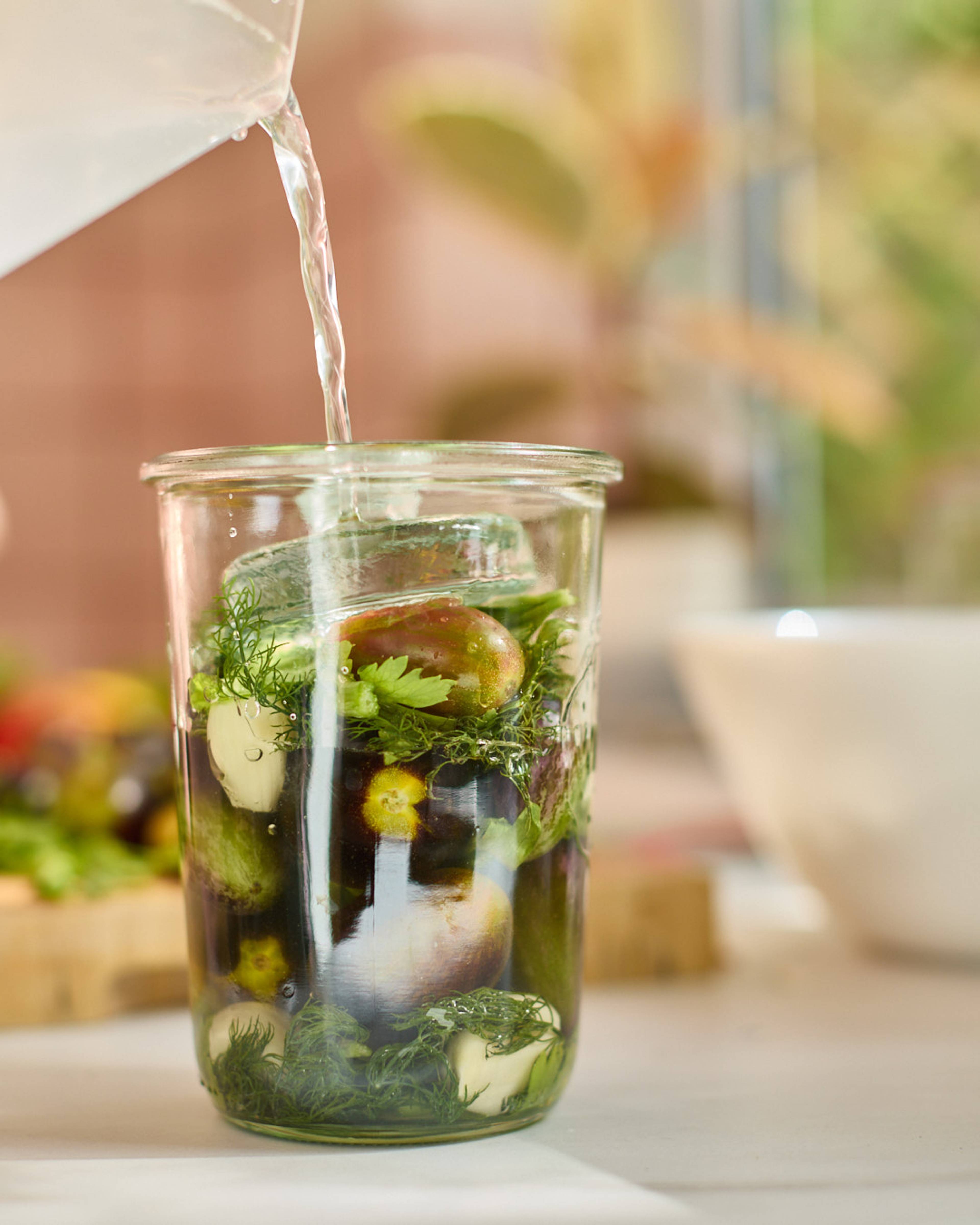
We’re standing in his fermentation shed on a bright, blustery September morning, set at the back of his family garden in Kent.
The space feels part workshop, part kitchen: a freestanding flipchart easel covered in handwritten notes, a stainless steel worktop, a shelf of cookbooks – Raymond Blanc’s Le Manoir aux Quat'Saisons among them – and rows of tubs filled with fermenting treasures. He lifts the lid from one of the miso tubs, releasing a rich fragrance that fills the small room.
Just outside, a passion fruit tree heavy with orangey-yellow fruit leans against the wall. “The birds love it,” he laughs.
We head back across the garden and into the kitchen where Dr Drain begins his recipe for Lacto-fermented Tomatoes. On the sunny counter, he packs colourful heirlooms into glass jars with garlic cloves, leafy celery, and a few fronds of feathery dill.
As he moves through the steps, we sip black coffee and speak about the joys of fermentation: the way it deepens flavour, the surprising beauty of unusual, sometimes oddly delicious, ferments, and how this ancient practice might help us reimagine the future of food.
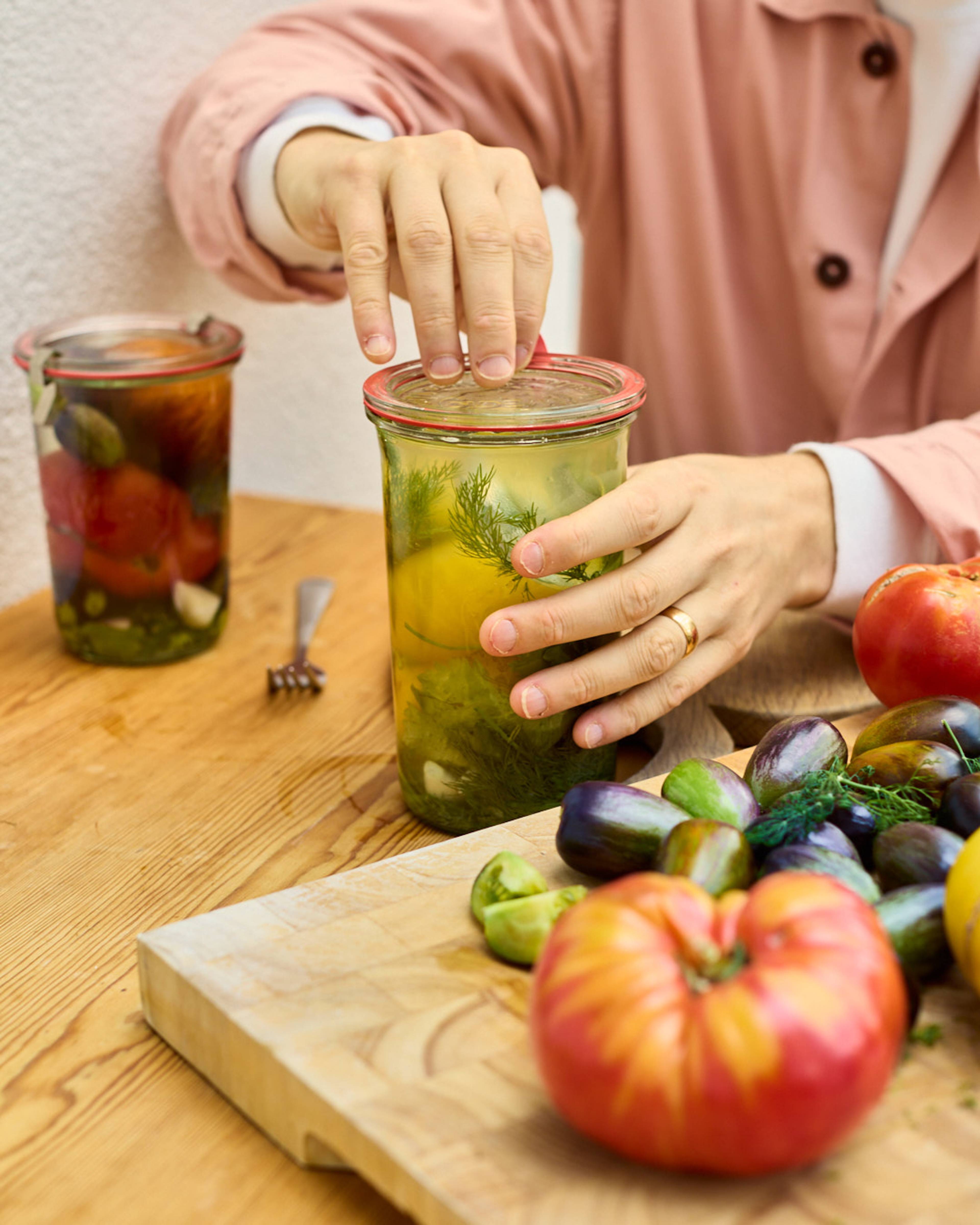
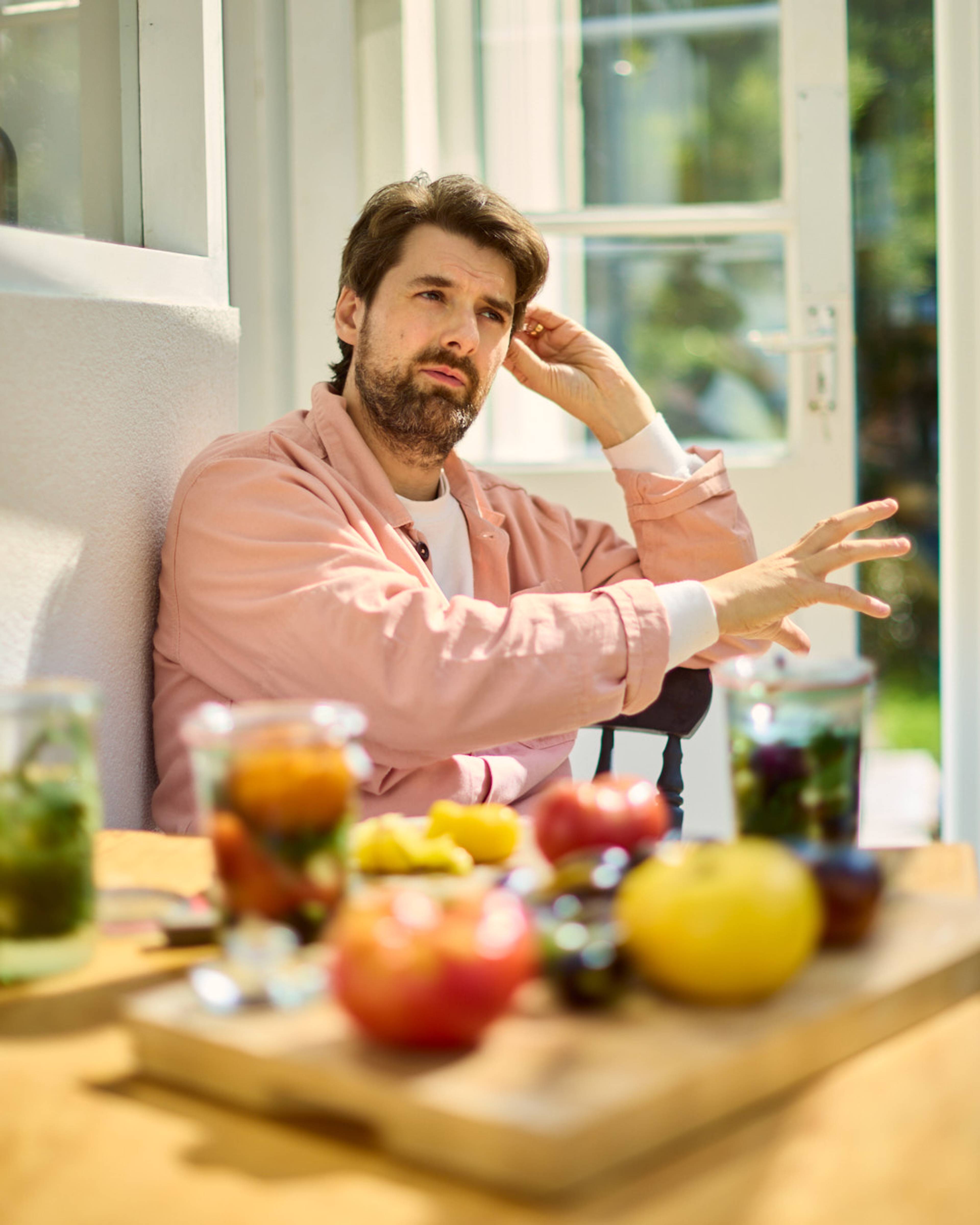
Could you talk us through what you’re making for us – why these ingredients?
This recipe has its heart and soul in Eastern Europe, from the Baltics to the Balkans, where tomatoes were preserved this way for generations. Really, it’s about timing: tomatoes are at their best right now and fermentation feels like the perfect way to both showcase and extend the season.
People often imagine fermentation as this complex, almost mystical craft – lab coats and microscopes. But really, all you need is a jar, some salt, and a tomato. Anyone can do it at home.
Where did your love for food and science begin?
Growing up, my sister and I were given a lot of freedom in the kitchen. By eight or nine, we were making omelettes and the like unsupervised – they were, perhaps, surprisingly, delicious. That curiosity about food stuck.
Science was the other obsession. I loved it at school and ended up doing a PhD in chemistry and physics, studying the building blocks of matter.
When I eventually moved into kitchens, it felt natural. Restaurants can be brutal environments, but if you’re curious and willing to learn quickly, people will take you in. And I realised the gap between food and science wasn’t as wide as people think. Both are about transformation and experimentation.
Fermentation can mean a lot of different things. How do you define it
Fermentation is cooking with microbes. Instead of fire or an oven, you’re harnessing bacteria, moulds, and yeasts to do the work. They change the flavour, aroma, colour, even texture of what you’re working with.
It sounds niche, but it’s not. Some of the world’s most beloved foods – bread, cheese, chocolate, coffee, wine – are all products of fermentation.
How does fermentation add flavour?
It’s like giving food a whole new language. Take soybeans: they can be bland when eaten raw, but through fermentation they become miso or soy sauce, packed with depth. Or milk, which becomes yoghurt or blue cheese.
With tomatoes, fermentation adds fizz and sparkle. Sometimes literally: I’ve had jars of tomatoes that build up so much pressure they explode like champagne bottles. Once, I opened a jar and it painted the ceiling red. It’s messy, but also kind of wonderful – that sense of food being alive.
These microbes can create acidity, sweetness and umami – flavours we are hardwired to crave. It can make food taste more complex, more satisfying, sometimes even addictive.
And why is fermentation important for the planet?
Microbes are recyclers. They take what’s already there and transform it. That means you can save food on the edge of spoiling, like tired vegetables, and turn them into something delicious.
On a bigger scale, fermentation can help us rethink waste. I’ve worked with olive pulp, the byproduct of oil pressing. Normally it’s discarded, but by fermenting it you can make savoury pastes or new flavourings. In that sense, fermentation isn’t just a culinary trick, it’s a tool for sustainability.
You’ve worked in pioneering kitchens like Noma. How has that shaped your view of food culture?
At Noma’s Nordic Food Lab, I worked alongside chefs, scientists, anthropologists, even historians. Everyone brought a different lens to the same ingredients.
As a scientist, I didn’t feel out of place, just part of the experiment. And that spirit of curiosity, of asking “what if?”, has shaped everything I’ve done since.
It’s also trickled down. It also helped popularise techniques like lacto-ferments, koji, and garums – long-standing traditions that the lab reframed for a new generation of cooks and now appearing in home kitchens and cafés. That’s exciting to me: these ideas should be part of everyday cooking.
Fermentation can sometimes go wrong. Any memorable mishaps
Plenty! Once, when I was in Japan, I ate some fermented ice fish. The next day, I got very, very bad food poisoning. At the time, I was with a number of chefs and foodie influencers on a boat. Not an experience I’d recommend.
At a less dramatic level, every fermenter has jars that go bad. Sometimes you get the microbes you want, and sometimes you get unwelcome interlopers. In some protein-rich ferments you can get compounds called putrescine and cadaverine, which smell exactly like you’d imagine. When you open the jar, it’s like death in a bottle. You learn quickly to trust your nose.
And then there are the explosions. Anything carbonating under pressure can blow. It’s basically a food bomb! I’ve had jars of fermented fruit that build up so much pressure they explode like champagne bottles. Once, I opened a jar and it painted the ceiling red. Fermentation keeps you humble.
What’s one of the most unusual ferments you’ve tasted or created?
I’ve tried Sardinia’s casu marzu, a sheep’s cheese deliberately cultivated with live maggots. It’s technically illegal to sell, but locally it’s highly prized. The maggots wriggle as you eat it – very confronting, but also oddly delicious.
In my own work, one of the most exciting projects has been making cocoa-free chocolate. We ferment grains and legumes – things like rice and barley – to replicate the flavour and texture of cacao. The result looks, smells, and tastes like chocolate, but there’s no cacao in it at all. It’s disorienting. Your brain says “chocolate,” but your rational mind knows otherwise. That tension is fascinating.
And in a perfect world, what does the future of food look like?
I’d love to see more people cooking again – properly cooking, from raw ingredients. And I’d love to see fermentation become part of that everyday process. It’s empowering – you take something perishable and fragile, like a tomato, and transform it into something with new life.
Stories
Voir toutWe exist to fix the food system.
People are more cut off from the origins of their food than ever. This makes flavour, nutrition and farming practices that protect the planet, almost impossible to find.
By working directly with growers, we create a more sustainable way forward for farming. By giving everyone the tools to understand the power of our food choices, we empower everybody to become drivers of change.
Now is the time for action. Join the food system revolution.

Go beyond four seasons
Each fruit and vegetable has its own season, with subtle shifts which happen every day. Follow their microseasons to unlock flavour at every stage.
WHAT’S IN SEASON?

Know where your food comes from
We know the name of the people behind everything we source. Recognise their growing artistry to find out exactly where your food comes from (and why that matters).
MEET THE GROWERS

Make your diet diverse
Our growers work with varieties chosen for quality and nutrition, not yield. By selecting their crops you keep heritage seeds in play, add to ecosystem biodiversity and preserve unique flavours.
PEAK SEASON BOX
United Kingdom
© 2025 Natoora Ltd.
